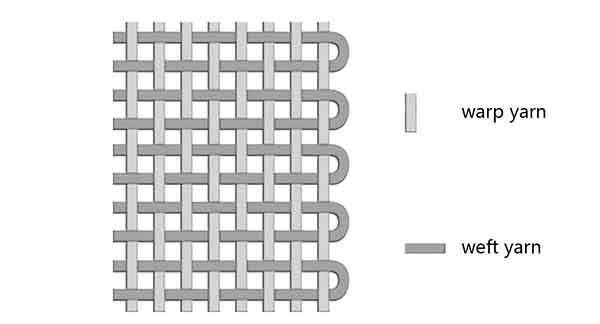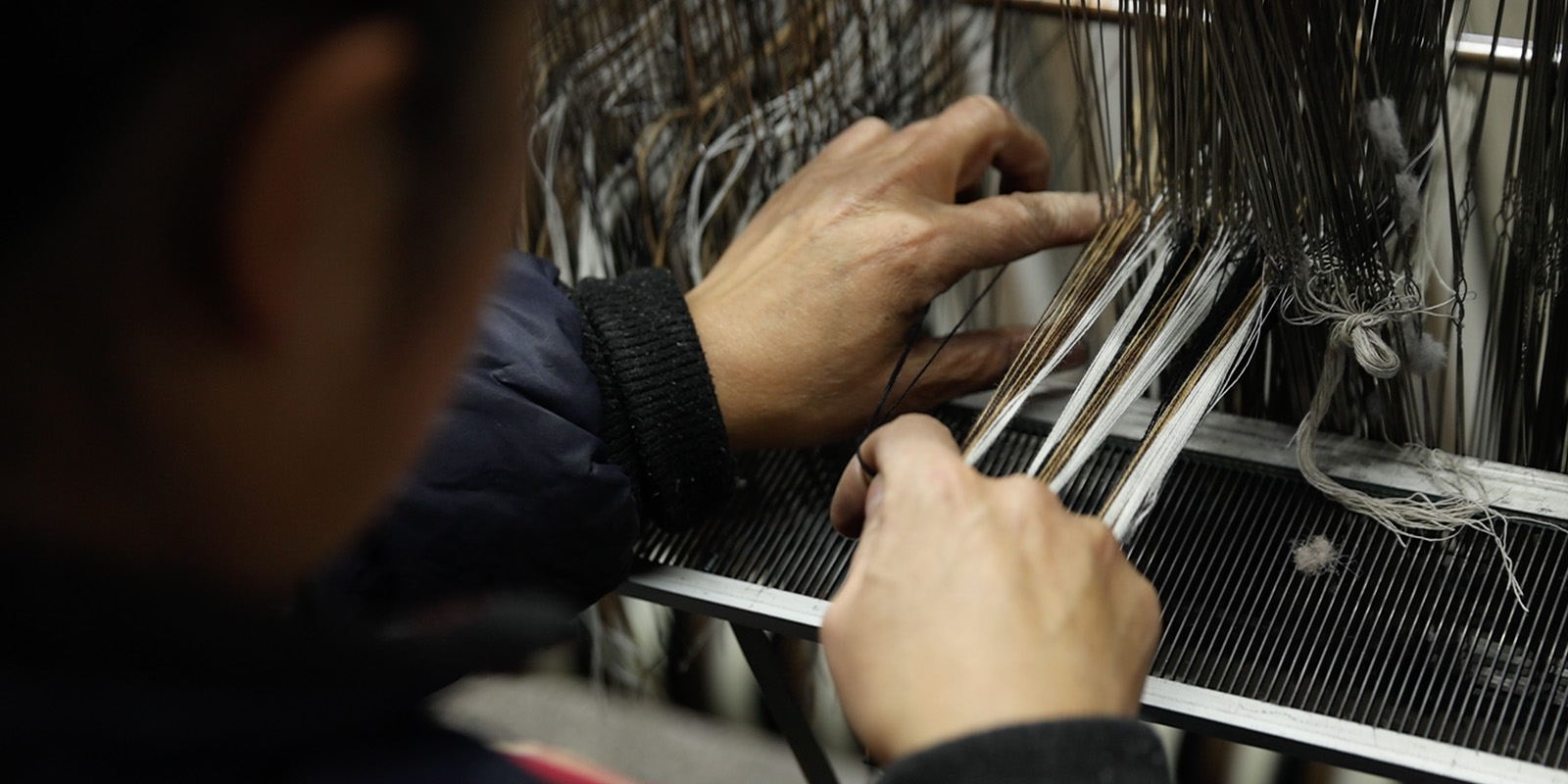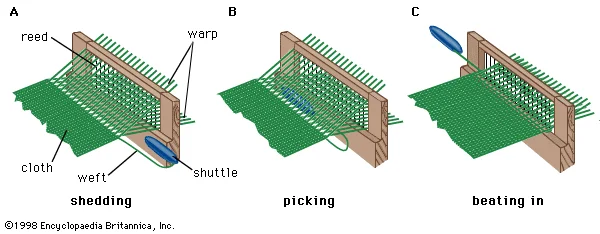How Cashmere Wovenwear is Made
Overview
Weaving is the process of creating fabric by vertically crossing weft yarn with warp yarn.

Weaving Technology
Warp yarns(also called ends) are pre-wound on a warp beam and is fed into weaving machine. There can be thousands of warp yarns wrapped around the beam through a process called warping.
Weft yarns(also called picks) are pulled by a shuttle that goes through warp yarn to create different patterns.
Warping

Warping
Warping is a crucial step in the preparation of yarns for weaving. It is one of the preliminary stages in cashmere weaving that involves arranging and aligning parallel yarns to create a warp beam, which serves as the primary set of lengthwise yarns in a woven fabric.
The warping process is essential for ensuring uniformity, tension, and efficiency during the weaving stage.
Three Motions of a Weaving Cycle

Weaving Technology
Shedding: Separating warp yarns into two sheets so weft yarns can go through. Each warp yarn is controlled individually, making all sorts of weaving structures possible.
Picking: Weft yarns are placed between the two sheets of warp yarns with the help of a shuttle. Different weave patterns can be created based on how the warp yarns are separated.
Beating In: Newly-laid weft yarn is pushed towards the fabric already woven, giving the fabric desired density.
Finishing
Once the yarn is woven into fabric, careful inspection and darning are done and then it goes into finishing stage.
Finishing is probably the most crucial step for woven products as it determines final look and feel of an item.
Milling and Scouring: refers to the washing and cleansing of the woven or knitted fabric to remove impurities, natural oils, and any remaining spinning lubricants. This process is essential to prepare the material for further treatments and ensure a clean and soft finished product.
Scouring involves using mild detergents or cleaning agents to gently cleanse the fibers without causing damage.
Fiber Raising: After milling and scouring, the fabric undergoes fiber raising, where the surface is brushed to raise the fibers. This step enhances the softness and fluffiness of the cashmere wool, creating a luxurious and tactile texture. The raised fibers contribute to the scarf's warmth and comfort, providing a soft touch against the skin.
Teasel Raising: is a specialized process involving the use of teasel burrs, which are the dried flower heads of the teasel plant. These burrs are applied to the fabric, and their natural hooks gently raise and align the fibers. Teasel raising is particularly effective in creating a fine ripple/waterwave finish, ensuring that the scarf achieves a consistent and refined texture.
Drying: Following the raising processes, the scarf is carefully dried. Drying is a crucial step to set the raised fibers and maintain the desired texture. Controlled drying conditions help prevent shrinkage and distortion while preserving the softness and loftiness achieved through milling, scouring, and fiber raising.
Pressing: The final step in finishing a cashmere woolen scarf involves pressing. This process smoothens the fabric, eliminating any wrinkles or irregularities. It also contributes to the scarf's overall appearance by ensuring a neat and polished look. Pressing is done with precision to maintain the delicate nature of cashmere, providing a sophisticated finish to the completed scarf.
Labeling and Packaging: After all the mentioned processes, the finished products are labeled and packed for shipment.
Quality Control
Quality control is carried out after each process to ensure there's no defect items.